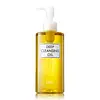What's inside
What's inside
 Key Ingredients
Key Ingredients

No key ingredients
 Benefits
Benefits

 Concerns
Concerns

No concerns
 Ingredients Side-by-side
Ingredients Side-by-side

Water
Skin ConditioningCaprylic/Capric Triglyceride
MaskingCaprylyl Glycol
EmollientCetyl Ethylhexanoate
EmollientChlorphenesin
AntimicrobialIsononyl Isononanoate
EmollientLavandula Hybrida Oil
EmollientOenothera Biennis Oil
EmollientOryza Sativa Bran Oil
EmollientPentaerythrityl Tetraethylhexanoate
EmollientPhenoxyethanol
PreservativePolyglyceryl-10 Dioleate
EmulsifyingPolyglyceryl-10 Oleate
Skin ConditioningPolyglyceryl-2 Oleate
EmulsifyingSimmondsia Chinensis Seed Oil
EmollientWater, Caprylic/Capric Triglyceride, Caprylyl Glycol, Cetyl Ethylhexanoate, Chlorphenesin, Isononyl Isononanoate, Lavandula Hybrida Oil, Oenothera Biennis Oil, Oryza Sativa Bran Oil, Pentaerythrityl Tetraethylhexanoate, Phenoxyethanol, Polyglyceryl-10 Dioleate, Polyglyceryl-10 Oleate, Polyglyceryl-2 Oleate, Simmondsia Chinensis Seed Oil
 Reviews
Reviews

Ingredients Explained
These ingredients are found in both products.
Ingredients higher up in an ingredient list are typically present in a larger amount.
This ingredient is an emollient, solvent, and texture enhancer. It is considered a skin-softener by helping the skin prevent moisture loss.
It helps thicken a product's formula and makes it easier to spread by dissolving clumping compounds.
Caprylic Triglyceride is made by combining glycerin with coconut oil, forming a clear liquid.
While there is an assumption Caprylic Triglyceride can clog pores due to it being derived from coconut oil, there is no research supporting this.
Learn more about Caprylic/Capric TriglyceridePhenoxyethanol is a preservative that has germicide, antimicrobial, and aromatic properties. Studies show that phenoxyethanol can prevent microbial growth. By itself, it has a scent that is similar to that of a rose.
It's often used in formulations along with Caprylyl Glycol to preserve the shelf life of products.